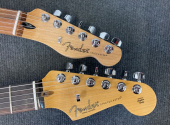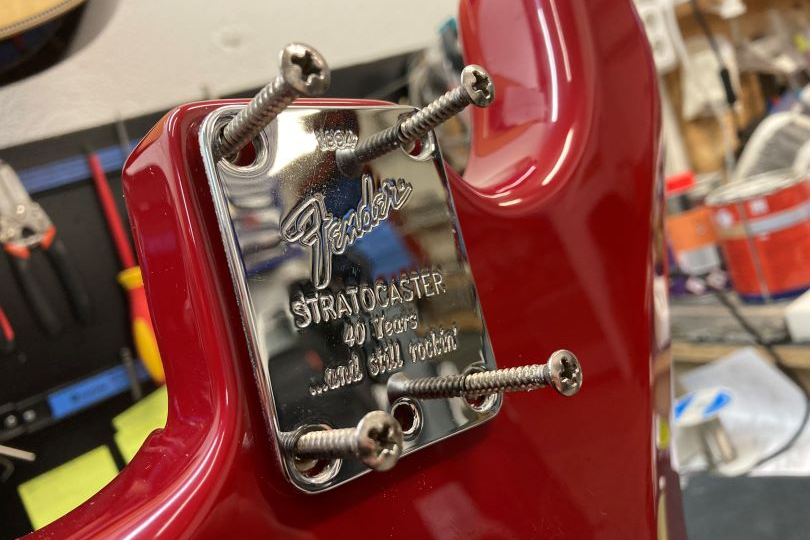
Under the Hood #14: Why Are Fenders from the 90s So Popular Today
Nowadays, Fenders from the 90s are quite popular and affordable; including the pieces made in Japan from the late 80s. Why do guitarists like them so much? Well, they are usually in good condition, look good and sound good too. Their good price makes them attractive as well. These guitars were made in the USA, Japan and Mexico, so there's a lot to choose from.
In the 1980s, Fender began officially manufacturing guitars in Japan, and its range expanded considerably. It all started during the era of Dan Smith, who came to Fender from Yamaha in the early 80s. His task was to analyse and streamline production, improve the quality of Fender instruments and make them attractive again. However, immediately upon joining Fender, Smith recognised that it wasn't just about streamlining production, but about making some radical changes. The CBS era was slowly coming to an end and with it the infamous period of Fender's history. Smith sums up these events in a great interview with Tony Bacon.
Changes in production in the 1980s
By about the mid-1980s, Fender guitars' popularity started to come back. Production was getting better, quality inspections were more rigorous, and the people at Fender were happy to work again. The corporate style and its faults were improving. New series of guitars, reissue models, and a quality manufacturing process were introduced. All of this resulted in better quality guitars.
The neck was connected to the body by four screws again. The Stratocaster's tremolo was anchored on two pivots instead of six. The design was given a modern look while retaining the old character. Then Japanese manufacturing came along, bringing something completely new and reviving something from the past as well.
Japanese factories generally followed the principle of traditional Japanese precision. At that time, everybody knew what kind of copies of Fenders and Gibsons were being made in Japan. They also knew about the lower cost of production there. Some factories achieved the quality of the original instruments from the US. So why not take advantage of that and produce officially? Fender began manufacturing at the FujiGen factory, which became quite well known over the years.
In this article, I will add a few of my subjective opinions on instruments from the era, because as a guitar technician, I have dealt with a lot of them, especially thanks to the guitar boutique Kytary.
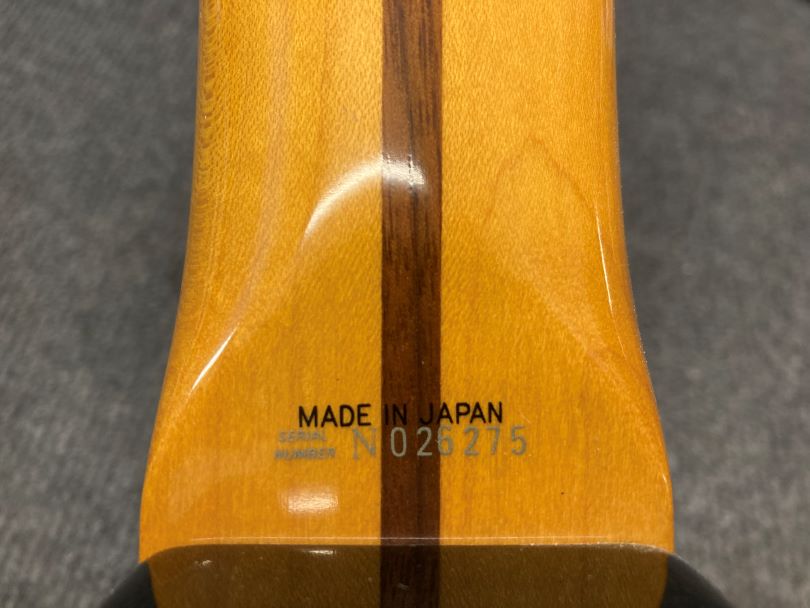
Japanese production
Japanese Fenders from the late 80s and early 90s still guarantee good quality at a reasonable price. They are instruments made to exact specifications.
If you hold them in your hand, the first thing you notice is its neck, which, in the vast majority of cases, has no major defects and is not deformed. This is a guarantee for future years—if the neck has not deformed in the first thirty years, it should last for many years to come. With bracing, you can fully adjust the neck relief and make everything suit your needs. Over the years, however, the frets usually suffer, they tend to get uneven and become very low due to constant sanding, making the guitar difficult to play. Of course, this is something that can be fixed by refretting. After that, the neck is like new again. Sometimes I wish today's new guitars had necks as good as these thirty-year-old instruments.
The pickups have a rather specific sound. They produce a somewhat vintage tone that is a bit worse than in the US models, but very distinctive. A lot depends on how the pickups sit with the rest of the guitar. I've played guitars that sounded aggressive and punchy with high output. However, most guitars have a typical mellow Fender sound.
What's interesting about these guitars is the longevity of the electronics. In many, the soldering and wiring are precise to the point of sterility. Most of the potentiometers are original and still fully functional. The tone knobs are not used that often, so they tend to get clogged and rattle a bit when turned. However, this can be cleaned away. These guitars also have a rather specific smell when the pickguard is removed. Old Fenders from the 60s and 70s smell a bit like old soil. The Japanese ones are different, more sterile.
The tuning machines have a vintage design and are also of high quality. They work smoothly and accurately.
If the guitar has a "Made in Japan" label on the back of the neck near the body, it is a guitar from the late 80s and early 90s made in the FujiGen factory. These guitars are abbreviated as MIJ (Made in Japan). They guarantee high quality, good playability and typical sound.
In the middle of the 1990s, production in Japan shifted to the Tokai and Dyna factories. These guitars no longer have Made in Japan labels on the back of the neck, it was replaced by "Crafted in Japan" (CIJ). However, the instruments still retain their high quality and continue to set standards. Even so, I have to say that I find the MIJ guitars superior in many ways. I recommend trying more of these instruments to make your own comparisons. If you're ever in our service area, I'd be happy to discuss it with you.
To sum up, after many years, Japanese Fenders still surprise me with their quality. They are a joy to set up, a joy to play, a joy to look at. So, if you come across a piece with a good neck, which most of them are, you've won. They are guitars that can be played to their fullest potential and many musicians perform or record with them regularly in studios.
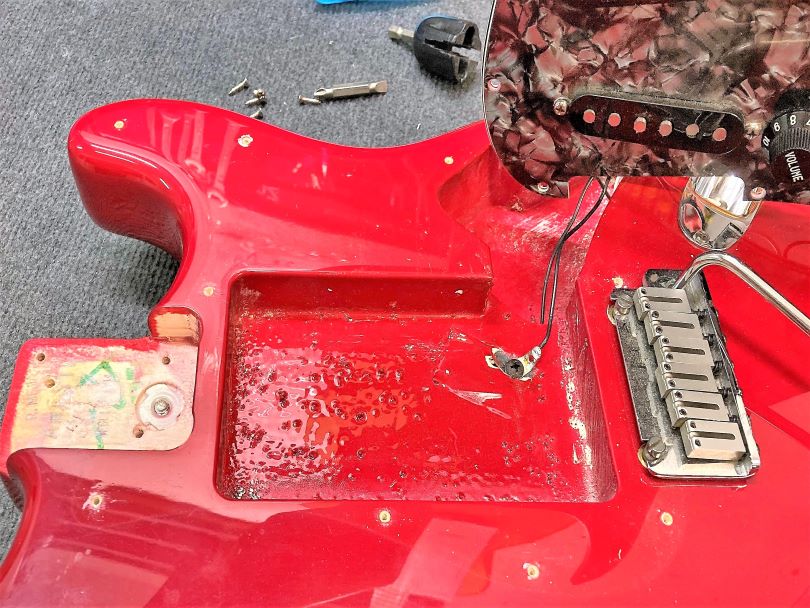
Fender USA
American-made Fenders from the 1990s are in many ways different from the Japanese ones. The American Standard models are particularly popular.
At first glance, they differ in hardware, paintwork and fret size. This is partly because the Japanese production tended to produce models to the old specifications—fretboard radius, fret size, lacquer colour or shape of the bridge saddles. The American Standard models were modern guitars that were based on the old models, but with new features.
The Stratocasters had different bridge anchoring, the frets were wider and higher, the fingerboard radius was flatter, the pickups sounded more modern and so on. In other words, a classic piece in a new guise.
The quality of their necks is striking as well. It is mostly in perfect condition and comfortably adjustable. It's practically the same as the Japanese models. Uneven and worn down frets can be a problem. Again, the solution is refretting.
The advantage of Stratocasters is that under the pickguard, there are no individual routes for three single-coil pickups, but there is a so-called swimming pool, i.e. a large empty space. If you want humbuckers instead of single-coil pickups, just modify or replace the pickguard. Thanks to the swimming pool, there is no need to mill larger routes in the body of the guitar for the pickups. The guitar body doesn't look very attractive because of this, but it's all about practicality.
The pickups have a modern sound. They don't offend, but they don't impress either. They're just standard. It's fully sufficient for everyday playing. Many guitarists change the pickups for other pickups, which is of course common with electric guitars.
The electronics tends to be of high quality and many of the components have not had to be replaced until today. The tuning machines can be modern or vintage. They are of high quality and their action is usually smooth and precise.
These guitars are popular for the same reasons as the Japanese models. They are good quality, stable and affordable. They have a more modern look, so everyone can choose either Japanese production, which looks more classic but at the same time it is not made in America, or US models, which are more modern in appearance, but won't appeal to everyone's eyes.
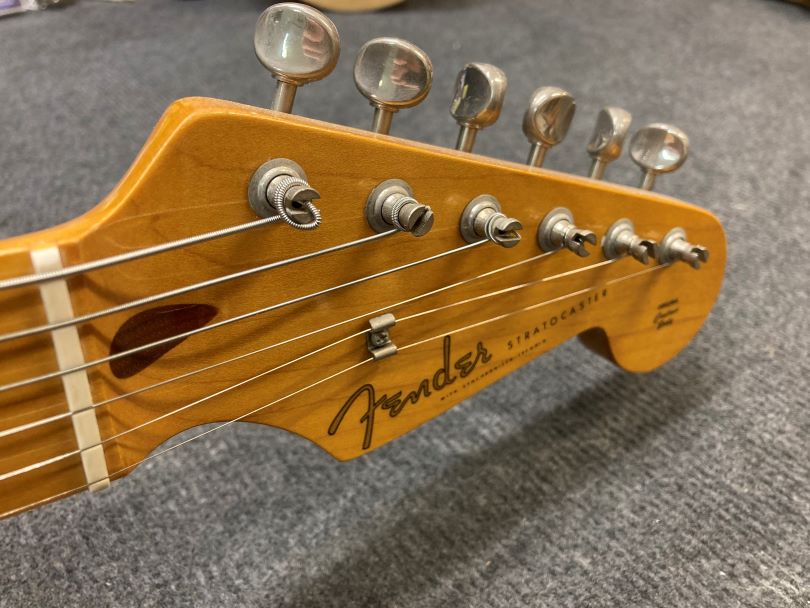
Fender Mexico
In 1990, Fender began manufacturing guitars in Ensenada, Mexico. These are models that can withstand a lot. They are the perfect choice for someone who plays and travels a lot or doesn't take much care of the guitar. A scratch or damage on these guitars doesn't bother you that much. The price is also very reasonable.
As far as quality is concerned, I would personally rank the 90s Mexican guitars below the US and Japanese models. They are very fine instruments, but they are not as distinctive and personal. It's a happy medium. The necks tend to be in good shape, which is a big plus, but their sound isn't that good. However, they are an ideal choice for casual players because their design is quite attractive.

To close
Fender guitars from the decade of the 90s and late 80s are stable, good quality and affordable instruments. There are quite a lot of them in circulation, so there are still plenty to choose from. They are a good choice for someone with little or moderate demand. Also, they can be well modified with other pickups or hardware.
I used to own a 1987 MIJ Stratocaster myself and still regret selling it some time ago. Therefore, I have conceived this article rather as an opinion piece open for discussion. And I have enjoyed sharing my ideas with you.
If you have found an error or typo in the article, please let us know by e-mail info@insounder.org.


